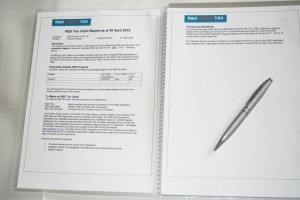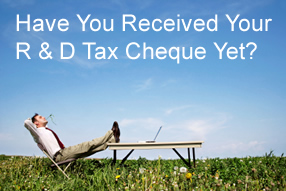Did you know that around 30% of Australian businesses claim to be innovative, yet less than 0.5% actually make R&D tax claims?
If you have clients in the manufacturing, health, agriculture, software, food, mining or construction industries there is a very high probability they should be making R&D tax claims.
R&D tax claims can lead to large cheques for small companies from the ATO when R&D tax claims are elected as a refundable tax offset. Many small companies rely upon this cash flow each year but many more are still unaware that projects they do every day could be eligible for this funding.
With our goal in mind to get all the small businesses in Australia to pick up their rightful R&D tax entitlements, here are our Top 5 things we would like accountants to make sure they get right when dealing with R&D tax claims:
1. ASK ABOUT R&D
Please ask all clients, especially those that are in the manufacturing, software, mining, health, food and agriculture industries whether they will be making an R&D tax claim at tax time. These are the industries most likely to be eligible for R&D. So many have never heard of the R&D tax benefits and will be relying upon their tax advisors to let them know that these programs exist. To view examples of recent benefits received by small companies, click here.
2. ONLY COMPANIES CAN CLAIM
Know that R&D tax claims and grants can only be made for registered Australian companies. Please consider this when setting up the organisational structure for the company. If your client is in one of the industries listed in 1. perhaps consider whether a company structure may be better than a trust or partnership. However if your client is operating as a trustee company, know that there may be circumstances where it can be eligible if it is doing R&D on behalf of itself and not the trust. There is one R&D claim per company per financial year but if multiple companies are involved there can sometimes be joint claims where each company claims its share of costs incurred in its own R&D claim.
3. Understand How The R&D Fits Into the Company Income Tax Return
On a day to day basis there are absolutely no changes required to bookkeeping or accounting to make an R&D tax claim. It only appears right at the end in the Company Income Tax Return. This is because the R&D expenditure that is claimed is simply ordinary company expenditure that has been classified as R&D because it was directly related to R&D activities. To let the ATO know this though we complete an R&D Tax Schedule at tax time that is attached to and feeds into the calculation of the tax payable or refund amount. Relevant labels are L, D, U, V, Y and M.
If the R&D Tax Concession is elected this has the effect of reduced tax payable. If this increases losses, then generally losses can be carried forward.
If the R&D Tax Offset is elected (best for small businesses in tax loss) then in most cases the tax loss amount is converted to a cheque from the ATO for the equivalent amount of the R&D expenditure. Two situations this will not occur are when there are not enough losses or where the client has existing tax liabilities. The R&D tax offset cheque will be used to pay any existing tax liabilities before any remainder is sent to the client.
To work out the benefit amount, for the R&D Tax Concession election multiply the R&D expenditure by 7.5%. For the R&D Tax Offset election the maximum amount is generally 37.5%. With the R&D Tax Offset there are a series of steps to go through to get to the exact benefit amount. The ATO has set it out in their R&D Guidebook (Part C) and we have used this to create a handy little R&D benefit calculator tool (we use it all the time). Unfortunately the steps are a little long to list here, but it is well worth knowing, and I am happy to pass this onto to anyone interested ([email protected]).
4. Don’t forget Label D
As R&D expenditure has already likely hit the Company Tax Return as deductible expenditure, we need to make sure there is no double deduction when we feed the R&D numbers again in the Company Tax Return via the R&D Tax Schedule. This is where Label D becomes an essential requirement. Companies must make sure they include their R&D expenditure amount at Label D which has the effect of adding back the R&D expenditure that was already deductible. Of course if the R&D expenditure was capitalised during the year for any reason, then make sure this amount is not included at Label D.
5. R&D Tax Offset Cheques are Not Assessable Income
They are not grants and therefore do not need to be included as assessable income. To record them as a general rule the journal entries are:
Upon creating the R&D tax offset refund:
Cr Income tax expense
Dr Provision for tax
When the refund comes in it is coded to the provision for tax account:
Dr Bank
Cr Provision for tax
Finally, if you think your client might be making an R&D tax claim, particularly an R&D Tax Offset claim, then make sure to hold off lodging the Company Income Tax Return until your client has lodged and received their R&D registration number from AusIndustry. Companies have 10 months after year end to obtain their R&D registration number. The R&D registration number is then included in the R&D Tax Schedule. No number, no cheque.
If you want to help your clients using Australia’s best practice and award winning R&D tools, then purchase our 2011 R&D Tax Toolkit for Accountants. Identify eligible projects quickly, prepare the R&D Application form in one step and minimise compliance risk with proven substantiation templates. Plus get 12 months access to a qualified R&D tax specialist to contact at any time with queries. With maximum benefits and minimum fuss it will be easy to show your clients the value this tax time. Click Here to Learn More.







